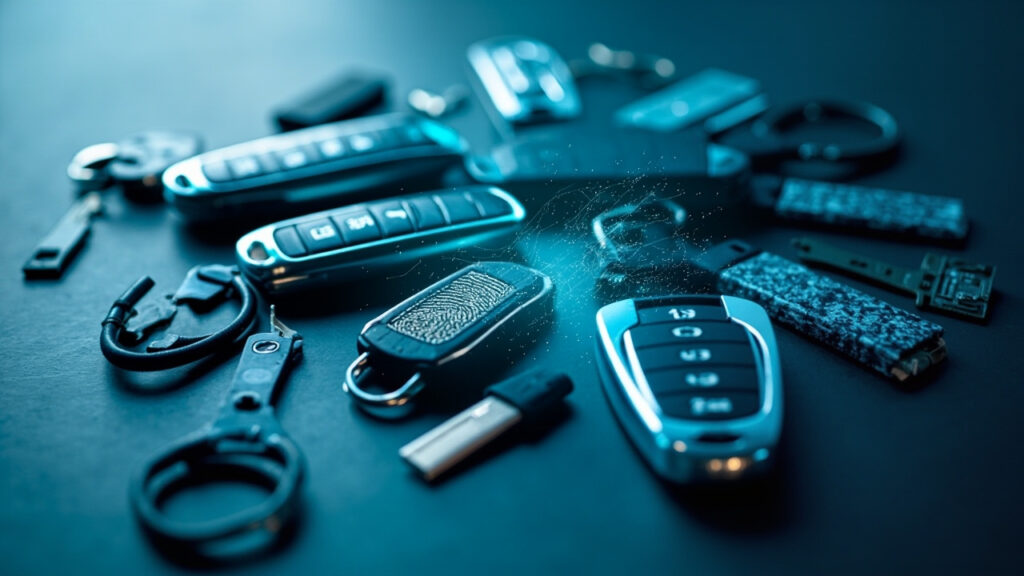Keys have been an integral part of human society for millennia, serving as tools of access and symbols of authority. Historically, keys and locks were not just practical devices for security but also status symbols and works of art. As technology has evolved, so have keys, transitioning from physical artifacts to digital solutions that secure data, information, and even identities. This blog post explores the fascinating journey of keys from ancient times to the digital age, their various applications, and how modern innovations, particularly in software testing and security, are shaping their future.
The Historical Significance of Keys

Keys have been a cornerstone of security and privacy for centuries. Let’s delve into their historical context, uses, and cultural significance.
The Origins of Keys
The earliest known locks and keys appeared in ancient Egypt and Babylon, over 4000 years ago, featuring wooden pin locks that set the foundation for security mechanisms. These keys were bulky and often designed with elaborate decorations that reflected the wealth and status of the owner.
Evolution Through the Ages
During the Roman era, metal locks and keys were developed, enhancing the durability and complexity of security devices. The Middle Ages saw locksmiths becoming respected artisans who created sophisticated and ornate keys that symbolized power and prestige.
The Symbolism of Keys
In many cultures, keys hold symbolic meanings such as authority, knowledge, and liberation. In Christian symbolism, keys are associated with St. Peter, signifying the gatekeeper of heaven.
Modern Key Technologies and Their Applications

With the advancement of technology, the role and form of keys have dramatically transformed. Here’s how modern keys function across different domains.
Physical Keys: Security and Beyond
In the contemporary world, physical keys continue to secure homes, vehicles, and personal safes. However, their designs have become more sophisticated with magnetic coding, electronic chips, and high-security features to prevent duplication.
Digital Keys: A New Era of Access
Digital keys in the form of passwords, PINs, and access codes now secure vast amounts of data. In cybersecurity, encryption keys protect information by ensuring that data can be decrypted only by those who possess the corresponding keys.
Biometric Keys: The Future is Now
Fingerprint scanners, facial recognition systems, and iris scanners use unique human characteristics as keys, enhancing security by tying access directly to an individual’s biometric data.
The Role of Keys in Information Security

Keys are crucial in the realm of information security, where they encrypt and decrypt sensitive data. Let’s explore their importance and challenges in this field.
Encryption and Cryptography
Encryption keys are used to secure data transmissions across the internet, ensuring that sensitive information such as credit card numbers and personal identifiers are protected from unauthorized access.
Key Management Challenges
Managing digital keys can be complex, involving secure key storage, access controls, and regular updates to avoid vulnerabilities. Mismanagement can lead to significant security breaches.
Future Trends in Key Technology
As cyber threats evolve, so do encryption methodologies. Quantum cryptography and blockchain technology are set to revolutionize how keys are generated, managed, and used.
Enhancing Software Security with AI: The Role of GenQE

In the context of software development and testing, keys play a pivotal role in maintaining application security. GenQE, a cutting-edge AI-powered platform, enhances this aspect by integrating advanced testing and quality assurance methodologies.
AI-Driven Test Generation
GenQE automates the creation of test cases that mimic complex user interactions, potentially uncovering security vulnerabilities that manual testing might miss.
Self-Healing Automation
By automatically adjusting test scripts when applications update or change, GenQE minimizes disruptions in continuous testing environments, helping maintain consistent security standards.
Comprehensive Test Coverage
The platform ensures that all aspects of an application, including its security features like digital key generation and management, are thoroughly tested across various environments and devices.
Keys in the Age of Smart Technology

Smart homes and IoT devices use digital keys for a new level of convenience and functionality. Here’s how keys are evolving in the smart technology landscape.
Smart Locks and Home Security
Smart locks allow users to unlock their doors with smartphones, voice commands, or even remotely over the internet, offering both convenience and enhanced security.
IoT and Beyond
In IoT, keys secure communications between devices, ensuring that data remains safe from interception and manipulation as it travels across networks.
Conclusion: The Future of Keys and Security

From ancient mechanical designs to sophisticated digital solutions, keys have continually adapted to meet the needs of security and accessibility. As we move forward, the integration of AI and machine learning in platforms like GenQE will further revolutionize how we manage and secure keys. For developers, adopting such tools can accelerate development cycles, enhance security, and reduce costs, making it an essential step toward future-proofing applications.
Whether you’re a software developer, a security expert, or simply someone interested in the evolution of keys, exploring advanced tools like GenQE can provide deeper insights and enhanced capabilities in managing the keys to our digital and physical worlds.
Discover More Innovative Solutions
Want to learn more about the tools and technologies discussed in this article? Explore how these innovations can be tailored to your specific needs and workflow requirements.
Our team of experts is available to answer your questions and provide personalized insights into how modern solutions like GenQE can address your specific challenges.